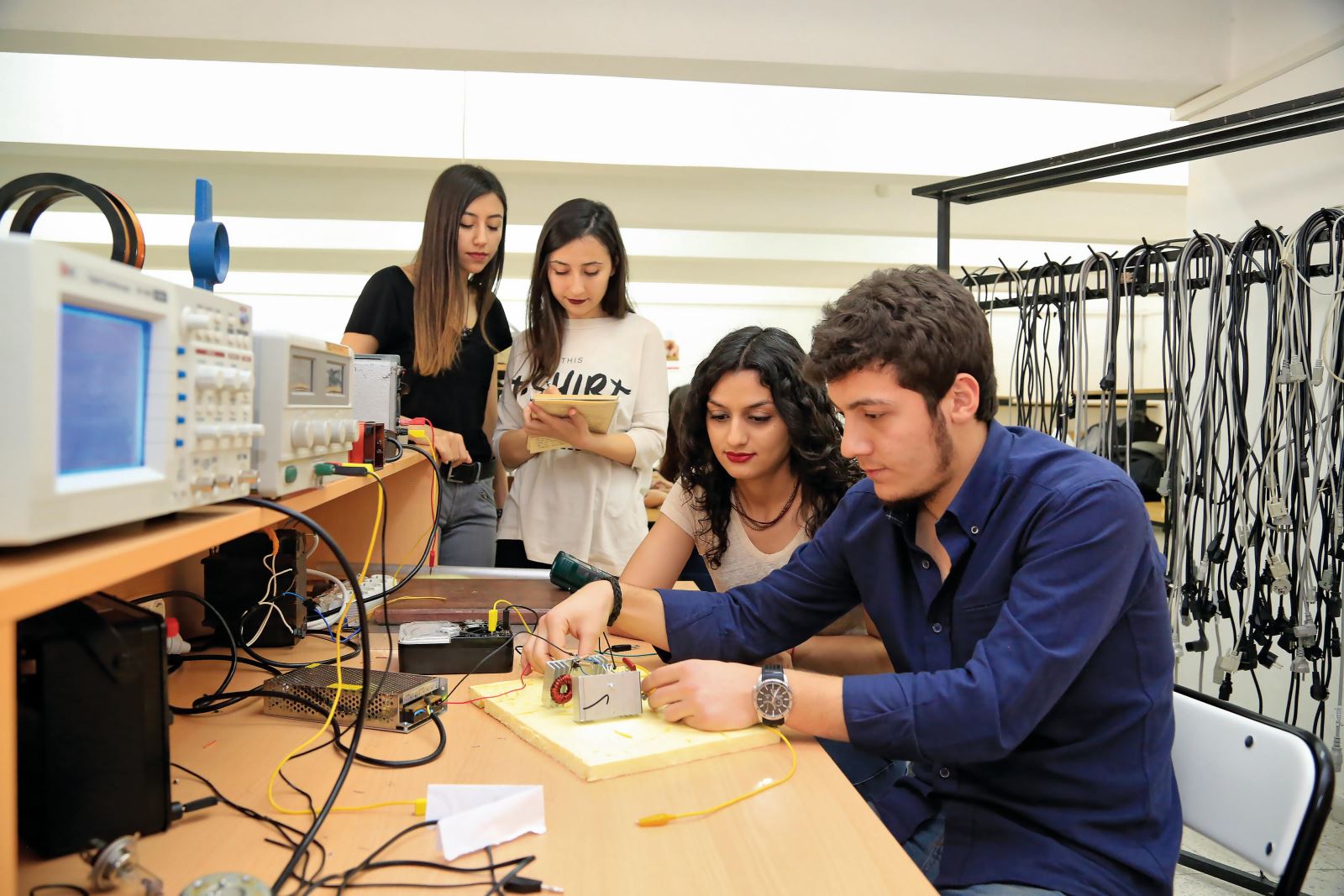Loading
Loading
Electronics and Communication Engineering (ECE) is a dynamic and rapidly evolving field that combines core concepts of electrical engineering, computer science, and communication technologies. It focuses on the design, development, and maintenance of electronic devices, circuits, and communication equipment such as transmitters, receivers, integrated circuits (ICs), satellites, and wireless systems.
Studying ECE abroad allows students to explore a globally relevant curriculum supported by advanced research labs, exposure to real-world tech applications, and cutting-edge fields like 5G/6G technology, IoT, embedded systems, VLSI design, and wireless communication. Graduates are equipped to work in industries such as telecommunications, consumer electronics, aerospace, automation, and digital systems—making ECE one of the most versatile and in-demand engineering disciplines worldwide.

A degree in Electronics and Communication Engineering abroad typically spans 3 to 4 years, depending on the country and the structure of the program. The curriculum blends theoretical foundations in electronics with practical applications in signal processing, digital communication, embedded systems, and hardware-software integration.
International universities offer a rich learning experience that includes lab work, simulation-based design, interdisciplinary projects, and research-based learning. Students are trained in designing electronic circuits, building communication protocols, and implementing wireless and optical communication systems.
Additionally, global ECE programs often emphasize current industry needs, incorporating topics like IoT, machine learning in embedded systems, semiconductor technology, and network security. The combination of classroom teaching and industry exposure ensures that graduates are prepared for a fast-evolving tech landscape, whether in research, product development, or systems engineering.
The ECE curriculum abroad is structured to provide foundational knowledge in electronics and specialization in communication and embedded systems. Programs usually progress as follows:
Year 1: Basics of electrical engineering, mathematics, engineering physics, introduction to circuits
Year 2: Electronic devices, signal processing, data structures, digital system design
Year 3: Communication systems, VLSI, microprocessors, control systems, embedded programming
Year 4 (if applicable): Wireless communication, IoT systems, research project or industrial capstone, electives
Many universities also integrate lab modules, simulations, mini-projects, and design studios throughout the program.
Analog and Digital Electronics
Signals and Systems
Electromagnetic Fields and Waves
Communication Systems (Analog, Digital, Wireless)
Microprocessors and Microcontrollers
VLSI Design
Control Systems
Embedded Systems
Optical & Satellite Communication
Internet of Things (IoT)
Antenna Design and RF Engineering
Programming Languages (C, C++, Python, Embedded C)
Several countries are renowned for offering world-class education in Electronics and Communication Engineering, each with its unique strengths and advantages.
The United States is a global leader in ECE education, with top institutions like MIT, Stanford University, UC Berkeley, and Georgia Tech offering ABET-accredited programs. These universities are deeply connected to the electronics and telecom industries, providing students with unmatched opportunities for research and internships in areas like chip design, RF systems, and IoT networks.
In Canada, institutions such as the University of Toronto, University of British Columbia (UBC), McGill University, and University of Waterloo are known for combining strong technical programs with co-op opportunities that allow students to gain real-world experience. Canadian programs often emphasize embedded systems, telecommunication engineering, and AI-integrated electronics.
The United Kingdom hosts prestigious schools like Imperial College London, University of Cambridge, and University of Manchester, which offer ECE degrees with a strong research base in wireless technologies, semiconductor devices, and digital communication. The UK also offers 1-year master’s add-ons and pathways to chartered engineering status (CEng).
Germany is ideal for students interested in a strong foundation in electronics combined with practical engineering training. Universities such as RWTH Aachen, Technical University of Munich (TUM), and Karlsruhe Institute of Technology (KIT) offer low-cost or tuition-free education and are heavily involved in R&D with top European firms like Bosch and Siemens.
In Australia, universities like the University of Melbourne, UNSW Sydney, and Monash University offer comprehensive ECE programs that integrate telecommunications, IoT, and electronic product design. Australia also supports international students with post-study work visas and strong industry ties.
Other strong destinations include the Netherlands with TU Delft and Eindhoven University of Technology; Singapore, where NUS and NTU are among Asia’s tech powerhouses; and Sweden, which offers forward-looking programs focused on sustainability, green electronics, and digital innovation.
At Exter Education, we are more than just an institute — we are a launchpad for future leaders, thinkers, and doers. Whether you’re looking to upgrade your career, master a new skill, or explore your passion, we’re here to guide your journey.
Got Questions? Call us
Enter your email and we’ll send you
more information